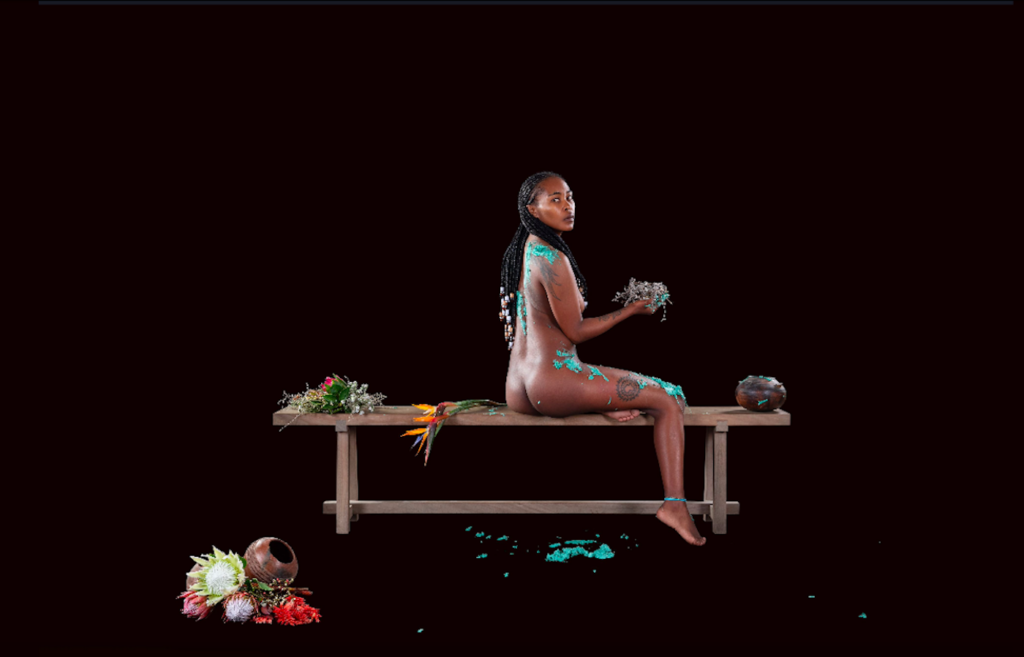MADRAGOA, Lisbon, Portugal
21 Sep 2022 - 12 Nov 2022

Buhlebezwe Siwani, Bageze ngobisi 2, 2022. Courtesy of MADRAGOA Gallery
MADRAGOA presents Amanzi angena endlini, the third exhibition of Buhlebezwe Siwani (b. 1987, Johannesburg) at the gallery. For this exhibition, Siwani presents two soap sculptures, a video, and a photograph, which all feature nude bodies of Black women, unapologetically themselves.
The artist somehow revisits history, pulling back from Renaissance’s Chiaroscuro to portray Black bodies in the video Amagugu (2022) and the self-portrait photograph Bageze ngobisi 1 (2022) along with what she refers as indigenous material (flowers, clay pots, and indigenous medicine–no guilty apples, thanks) as well as traces of the household soap–used by low-income families in South Africa, it is loaded with social and class and colour discriminatory signifiers–that has become a signature in her work.
In both the video and the photograph, the gazes of the women are held high, looking directly at the camera, in a silent but expressive stare that is at once, soft, intimidating, and haunting. The intense confidence of their gazes are in stark contrast with the zephyr-like quality of their poses, their curvaceous bodies and shining skins, and the harmonies vocalised by a choir of women in the accompanying soundtrack. Both strength and delicate beauty are underlined by the presence of fresh and dried flowers adorning the heads of the women or laying next to them, while the milky green soap alludes to a state of constant metamorphosis, from liquid to solid, as a metaphor for the shapeshifting malleability of perception. The soap is also the material of the two sculptures Zanobungcwele (2022) and Zanenkosi (2022), each representing a Black pregnant woman – the artist – either seated, head down but grave, or standing and cradling her pregnant belly with both hands. Unlike Rodin’s The Thinker the protagonist doesn’t need her fist and angular muscles to support her pensiveness–just being, and holding another being within, is plenty.
Siwani proposes a soft gaze on these women’s bodies, who are harnessing their force from motherhood, womanhood, and sisterhood at large, while speaking to the historical examples, the victims of colonisation whose stories epitomise how Black people have been treated and are now brought into awareness in order for Black people, especially Black women, to reclaim their bodies. Those include Sarah Bartmaan–the so-called “Hottentot Venus” paraded in freak shows around 19th century London and Paris and now considered as the embodiment of racist, colonial exploitation; Krotoa, the 17th century servant who became the principal interpreter for the Dutch settlement at the Cape before falling in disgrace; the mighty South African Zulu Queen, Nandi; and the controversial, alcohol-bribed, Queen Nonibe; as well as all the women who were underlooked as rightful resistance-fighters during the 18th and 19th colonial wars in South Africa.